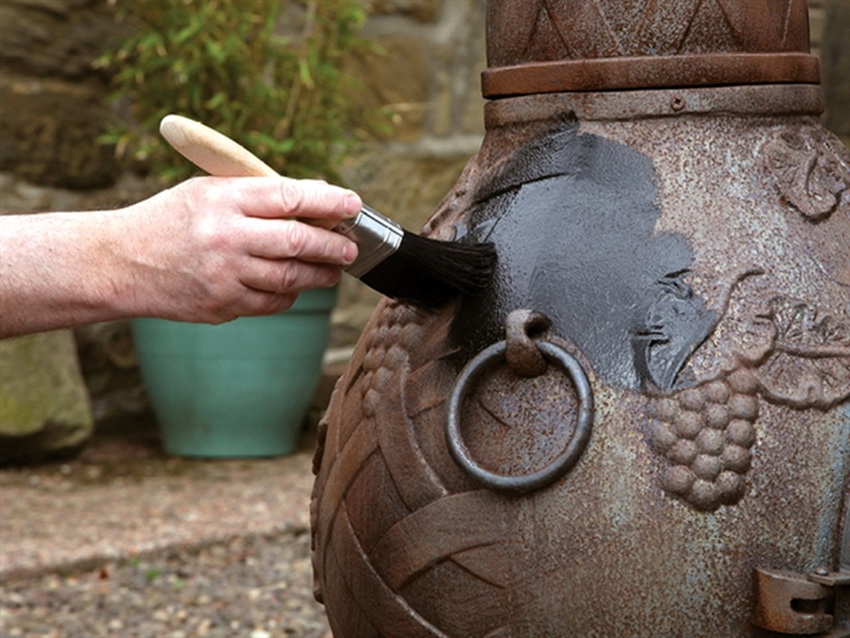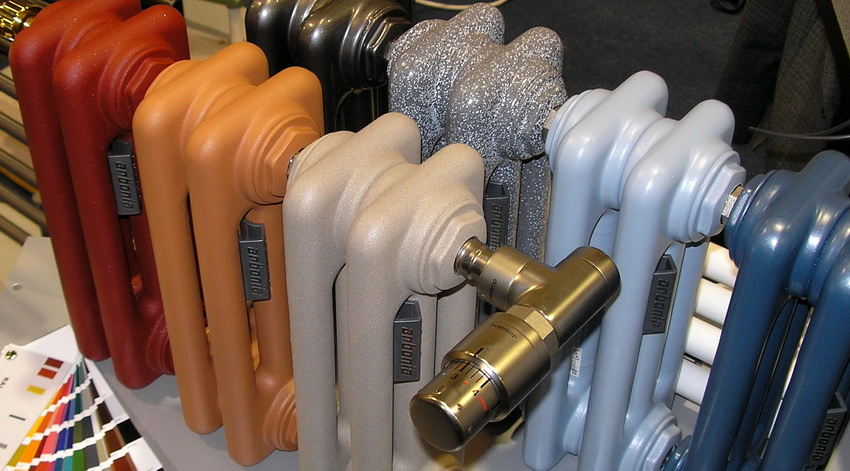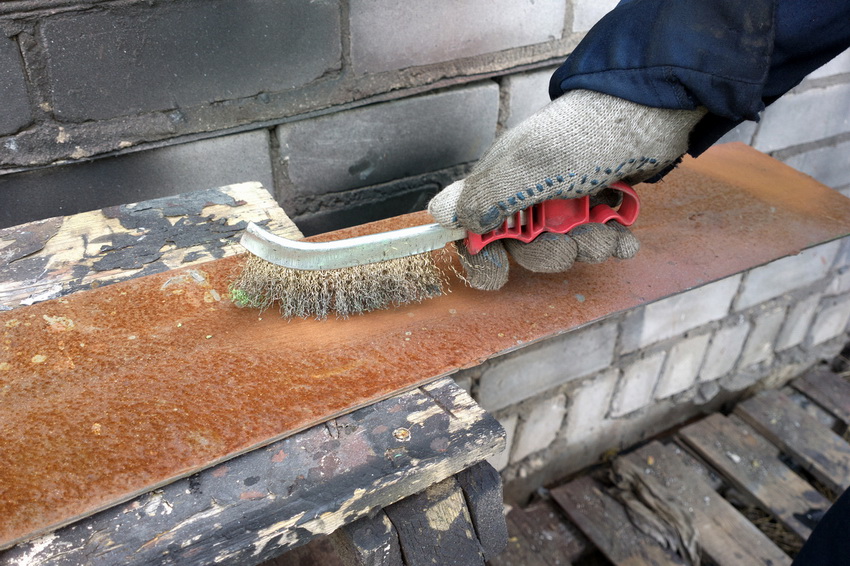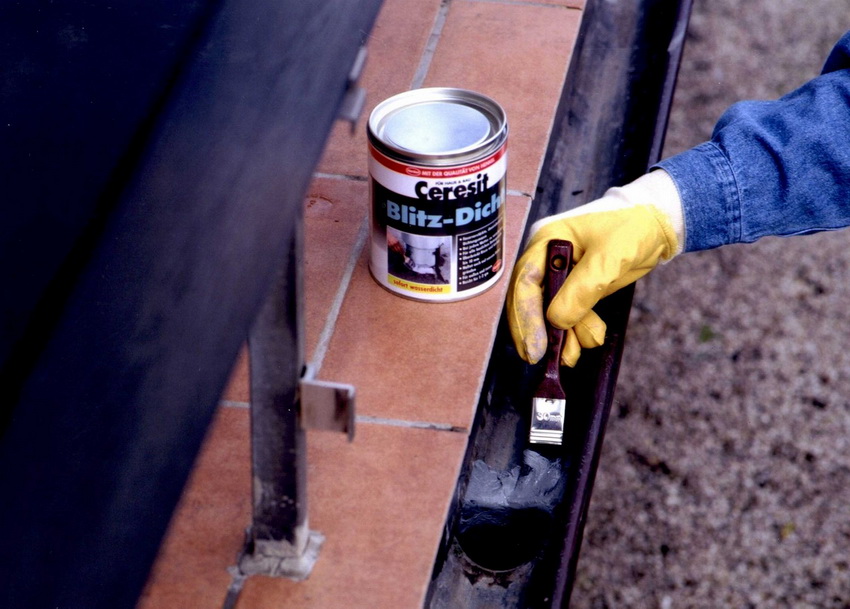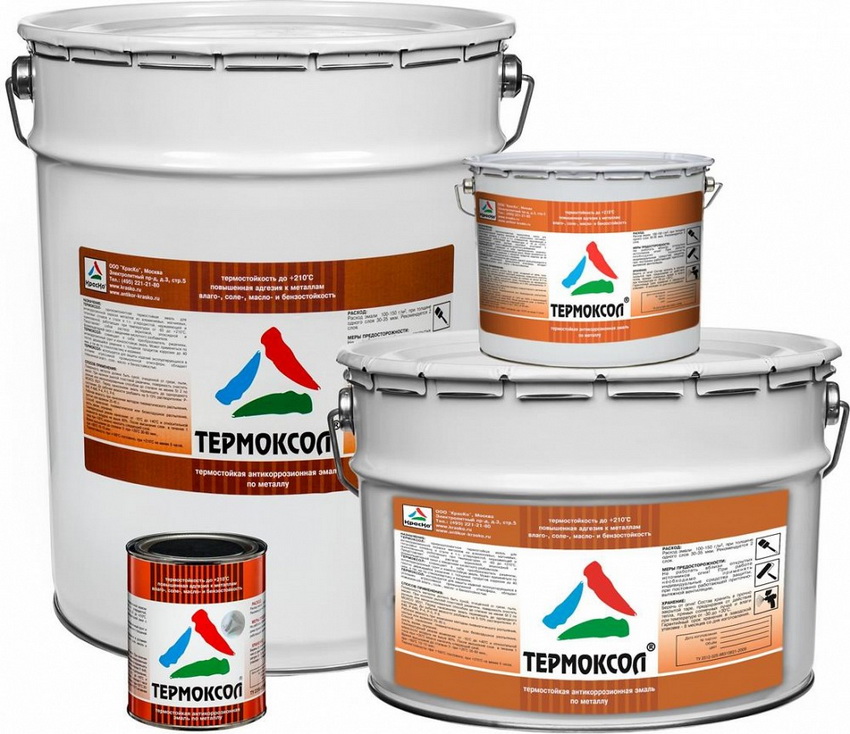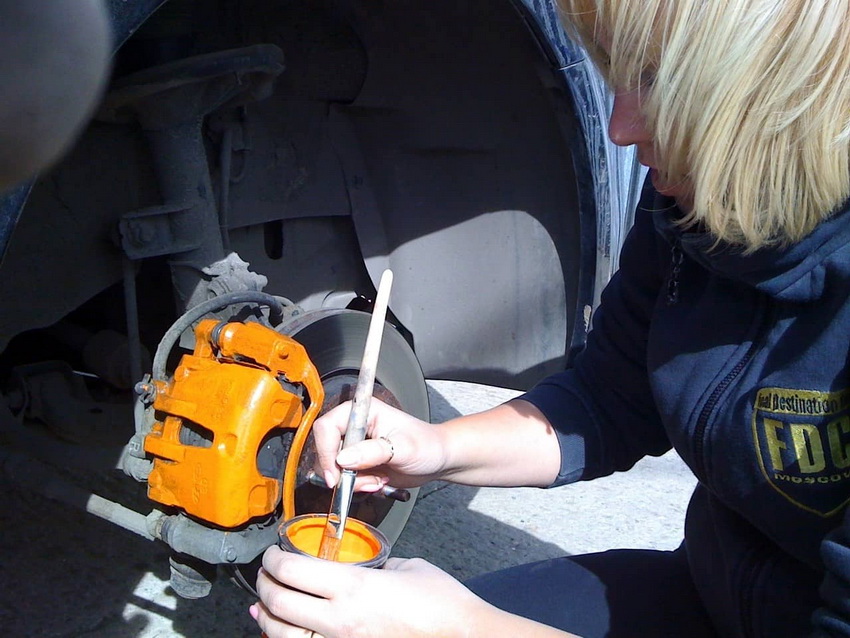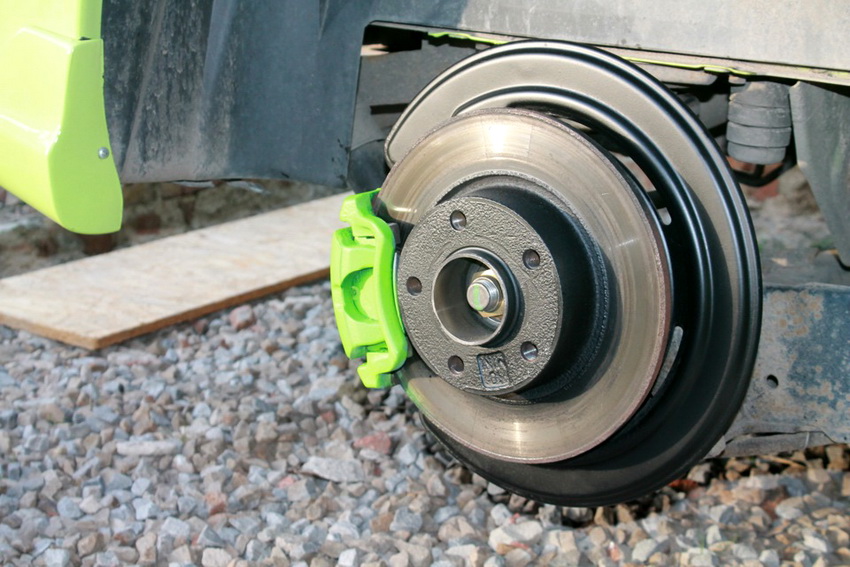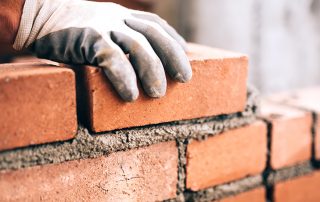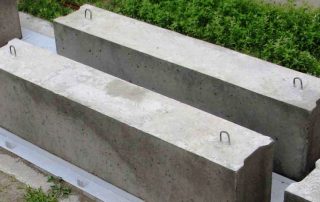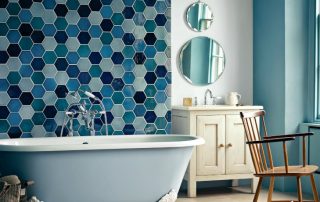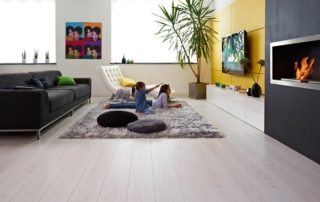From this article you can find out the features and specifics of such a finishing material as heat-resistant paint for metal. The text sets out the main criteria for the selection of compositions, the classification of existing materials that are resistant to high temperatures, their advantages and disadvantages, and average prices for the purchase of popular dyes. The article considers the possibility of painting the metal surfaces of a barbecue, stove, etc.
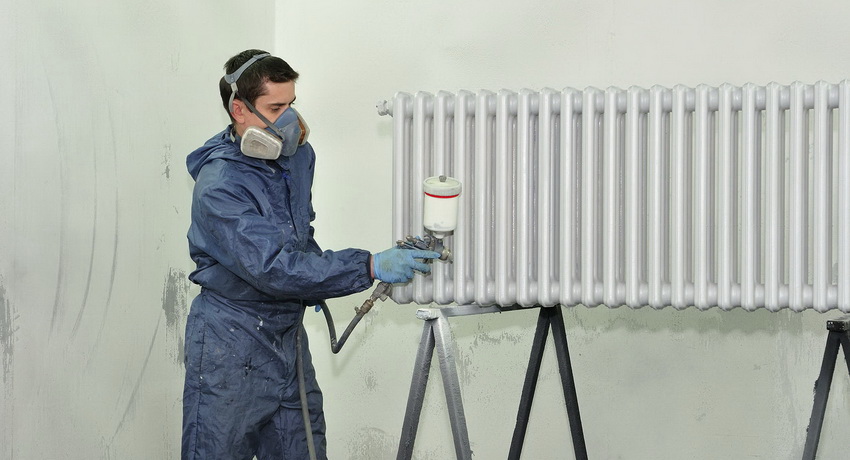
Heat-resistant metal paint is mainly used for painting furnaces, braziers, heating batteries, etc.
Content [Hide]
- 1 Heat-resistant paint for metal: properties and classification of compositions
- 2 What is better to buy heat-resistant paint for metal: the choice of composition
- 2.1 What paint to paint a metal brazier: heat-resistant, heat-resistant and refractory compositions
- 2.2 Recommendations for choosing the optimal heat-resistant paint for ovens
- 2.3 Features of heat resistant paint for calipers and mufflers
- 2.4 The choice of paint for calipers and application technology
- 2.5 Choosing heat-resistant paint for a barbecue or stove: popular manufacturers
Heat-resistant paint for metal: properties and classification of compositions
Many owners of country houses are faced with the problem of decorating fireplaces, stoves and other objects made of metal. This type of material is vulnerable to moisture and other environmental factors, therefore, updating the paintwork is aimed not only at maintaining the aesthetic appearance, but also at extending the operational life of the structure itself.

The use of fire-resistant paint for metal gives an aesthetic appearance and prolongs the life of the product
Not every finishing material can withstand high temperatures. Therefore, for the treatment of stove and fireplace structures, experts recommend buying heat-resistant paint for metal.
Note! The usual composition is able to withstand the influence of temperature no more than 40-50 ° C. Constructions of iron stoves installed in the bath are heated to 600-800 ° C. In the Combustion Zone, this figure can reach almost 1000 ° C. Professionals recommend choosing the composition taking into account the type of oven, because the degree of required heat resistance depends on this. For example, brick walls of ovens can only warm up to 200 ° C.
Features and properties of heat-resistant paint for metal up to 1000 degrees
The thermal stability of such dyes is due to the presence of organosilicon elements in their composition. In addition, the material contains fillers, polymers and coloring pigments.Thanks to these components, the dye provides the metal with protection against corrosion and environmental influences.
The polymers present in the composition are characterized by high strength. As a rule, they are made on the basis of oxygen, silicon and organic radicals. This is not the end of the list of components that provide the thermal resistance of refractory paint for metal for a barbecue or oven. The high stability parameter is due to the aluminum powder.
The service life of most heat-resistant dyes reaches 15 years. The method of application of the material, as well as the volume of organic resins in its composition, affects the elasticity and adhesive properties of the coating, and its drying time.
Advantages of heat-resistant paints for metal for ovens:
- electrical insulating properties - the material is suitable for finishing metal structures through which electricity can pass;
- anti-corrosion protection - heat-resistant paint prevents the destruction of metal under the influence of moisture;
- resistance to the influence of aggressive environments - protection against the negative effects of chemicals is provided;
- the ability to maintain properties at high and low temperatures, as well as sudden changes;
- ductility - during heating, the metal is subject to expansion, so the finish will stretch instead of cracking and crumbling.
Classification of refractory paints for metal
Heat-resistant dyes are classified according to different criteria. Most often, the compositions are divided according to the type of packaging. Consumers can buy heat-resistant paint for metal for a stove or barbecue in the form of a 400-500 ml spray can, cans (weight from 1 kg), buckets or barrels. The volume of the composition in a bucket can vary between 10-20 kg. The capacity of barrels is 40 kg and more.
Note! The shelf life of the heat-resistant colorant depends on the manufacturer and the components. However, the minimum period for any material is 7 months.
Materials also differ in the way they are applied. Most often, a roller, brush or spray is used for these purposes. The consumption of the composition depends on the tool used to paint the surface. For example, if you apply heat-resistant enamel on metal with a brush, then the material consumption will be 20-40% more than when using a spray gun. The resulting coating is practically the same in durability. The increased consumption of the dye is accompanied by the use of the aerosol application method.
Regardless of the method of application, it is imperative to select a dye with high adhesive properties. In other words, the composition must adhere well to the metal surface. Only under this condition can the coating provide a reliable level of protection against corrosion damage.
Scope of heat-resistant paints for metal
Heat-resistant dyes are used to decorate products that are used in conditions of strong moisture and high temperatures.
The capabilities of such compositions are useful for such objects:
- steam rooms;
- saunas;
- drying chambers (for these conditions, it is recommended to buy a fireproof paint for metal that can withstand from 600 to 1000 ° C);
- ovens;
- braziers.
Often, temperature-resistant compounds are used to treat elements of heating systems. Enamels with similar properties are widely used in the automotive industry. Dyes for mufflers, brakes, engine parts and other elements are specially produced for this.

Under the influence of high temperatures, the metal becomes vulnerable to corrosion, so you should definitely use a heat-resistant paint
Mostly such dyes are used for treating metal surfaces, although compositions with similar properties can be found on the market for treating brick, stone and wood.
Important! Before purchasing paint, be sure to read the manufacturer's instructions and its recommendations regarding the use of the composition on certain surfaces. If it is planned to open the stove structure in a bath, care must be taken that the finish not only shows resistance to temperature, but also withstands the influence of moisture.
Varieties of heat-resistant paints for metal: price and types of finishing materials by composition
The composition of the components in the finishing material is extremely important. The degree of stability of the dye and the temperature conditions in which it can be used depends on this.
Taking into account the above, the following categories of compositions are distinguished:
- alkyd;
- epoxy;
- colorants based on heat-resistant glass and composite materials;
- ethyl silicate and epoxy ester (one-component);
- silicone (one-component).
Alkyd or acrylic dyes - used for processing parts of heating systems. They are able to withstand temperatures up to 100 ° C. The category includes materials with zinc and zinc phosphate compounds. Cost from 2500 to 5500 rubles.
Epoxy paints can withstand temperatures up to 200 ° C. Some types of dyes do not need to be primed on the metal surface. The average price of this category of dyes is in the range of 2000-8000 rubles. depending on the manufacturer and the volume of the container.
The temperature limit for ethyl silicate and epoxy ester dyes is 400 ° C. These materials contain metallic powder. The range of prices for these types of dyes covers 3200-9000 rubles. per packing. Such compositions are used to process barbecues and barbecues.
One-component silicone compounds are fully resistant to temperatures up to 650 ° C. Manufacturers use polymer-type silicone resins as the basis for creating such dyes. Aluminum powder is often added to the material. The price of such paint varies between 300-6100 rubles.
Compositions with heat-resistant glass and composite materials withstand temperatures from 650 to 1000 ° C. The price of refractory paint for metal of this type is 2500-8000 rubles. per packing.
What is better to buy heat-resistant paint for metal: the choice of composition
To choose the optimal dye, it is necessary to take into account the main criteria put forward for materials of this type:
- heat resistance level;
- manufacturer's recommended painting temperature;
- time to complete drying (no more than 3 days);
- technical characteristics of the composition.
On sale there are dyes with different degrees of heat resistance - from 120 to 1000 ° C. This indicator is selected taking into account the conditions in which it will be operated. The highest heating is characteristic of a metal stove (800 ° C), the maximum limit of heating radiators installed in apartments is 90 ° C.
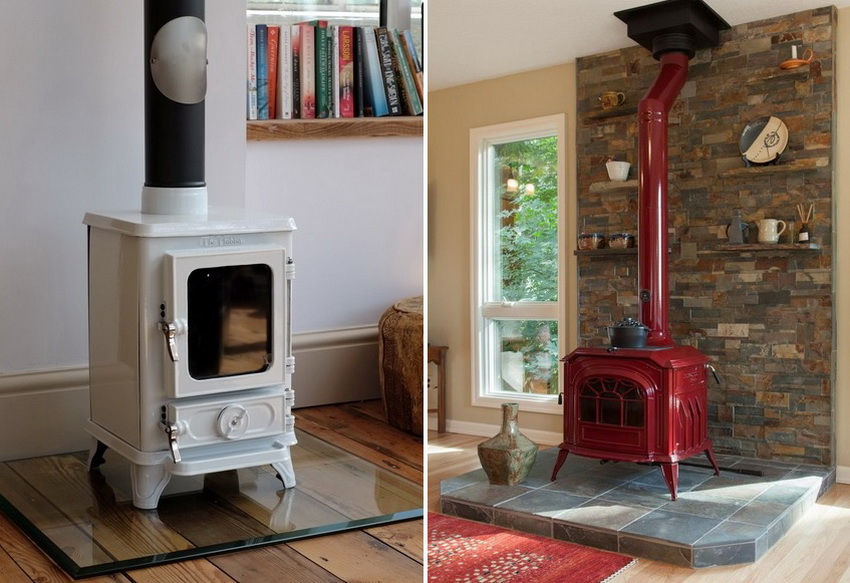
For painting metal stoves and fireplaces, you need to choose a paint with a high level of heat resistance
Helpful advice! If you add organic resin to the composition of heat-resistant metal paint for barbecue, you can speed up the drying time of the coating, as well as increase the plasticity and adhesive properties.
The quality of the staining result depends on whether all the requirements of the application technology are supported.These requirements include the preliminary preparation of the surface, the scheme of material application, the temperature regime, which should be adhered to during operation. In most cases, experts recommend painting metal surfaces at an air temperature of -30 to 40 ° C. The subsequent operation and service life of the coating depends on this.
What paint to paint a metal brazier: heat-resistant, heat-resistant and refractory compositions
Metal surfaces that are exposed to strong heating during operation are coated with refractory, heat-resistant or heat-resistant dyes. Heat-resistant finishes are recommended for coating structures that do not rise above 600 ° C.
It is allowed to use such dyes for processing metal parts of a brick oven or structures made entirely of this material, including barbecues. In this case, you should not apply the heat-resistant composition to the surface of the equipment installed in the bath. Most often, these ovens are heated to 800 ° C. Therefore, it is better to use heat-resistant dyes for these purposes.
Fireproof finishes are designed for painting items that are in close proximity or in contact with an open flame. For barbecues and barbecues, this is the best option. The use of such dyes for processing other objects will be impractical and will entail unjustified costs.
Related article:
How to choose paint for walls in an apartment? Main types and properties
How to choose paint for walls in an apartment? The main functions and performance properties of paints and varnishes. Varieties of conventional and textured paints.
For products that are heated to no more than 200ºC, it is best to buy heat-resistant metal paint in a can. High-temperature compounds are used for painting radiators and elements of heating systems in apartments and houses, parts of automobile engines, as well as seams and masonry of ovens made of bricks. For low temperature conditions, heat-resistant varnishes that can withstand heating of 250-300ºC are also suitable.
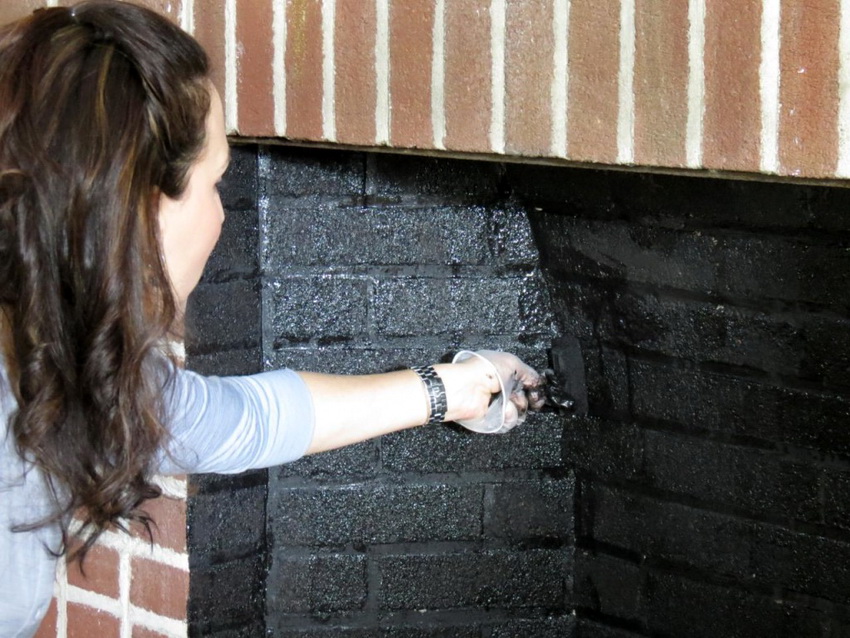
For painting individual elements of a stove or fireplace that are not exposed to direct heating, paint with a low level of heat resistance is suitable
Note! Do not confuse refractory compounds with flame retardant paints. When heated, such materials can swell, become bubbled and block oxygen access to the surface, preventing it from collapsing.
Recommendations for choosing the optimal heat-resistant paint for ovens
If you coat a metal stove with ordinary dye, the coating will turn black very quickly and become a source of smoke and unpleasant odors. The composition must correspond to the type of surface on which it will be applied. The scope of application is always indicated by the manufacturer on the packaging. If the composition is intended to handle different materials, all this information in smaller print can be found on the bank. In the absence of this data, as well as the brand name, you should refuse to purchase. Such questionable dyes can be of poor quality and hazardous to health.
Decorative qualities are also important. Most often, the buyer is faced with a choice between gray or black heat-resistant silver paint for metal. There are other shades on sale, although they are more difficult to find, for example, red, blue, white, green. Manufacturers offer dyes that can be used to create a matte or glossy finish. In this case, the gloss can have varying degrees of gloss.
Features of heat resistant paint for calipers and mufflers
Heat-resistant dyes are used to treat car parts made of metal. Moreover, the coating performs not only a decorative function.
The use of heat-resistant paint on mufflers, drums, calipers and other elements provides additional protection and also improves machine performance. In large cities, in winter, the roads are strewn with reagents aimed at combating ice. Such corrosive substances can cause corrosion of metal parts of the car in contact with snow or water.
Thanks to the dye, the heat transfer of the machine calipers increases. The fact is that these elements have a porous surface, where dirt inevitably accumulates. As a result, the cooling time is significantly increased. In addition, the process of cleaning the unit without removing the wheels becomes difficult. After the parts are treated with a heat-resistant dye, a smooth coating is formed on the surface, which improves heat exchange and prevents the accumulation of dirt. And the process of cleaning the assembly can be easily done with a small stream of water.
Dyes for the processing of metal car parts are supplied in three forms:
- Can (aerosol spray).
- Bank.
- Set.
Helpful advice! Do not completely remove the paint calipers. This will not only entail additional costs, but also cause problems in the operation of the brake system.
The choice of paint for calipers and application technology
Despite the popularity of heat-resistant paint for metal in cans due to its low cost, this finish cannot be called the best. Most often, 1 can barely covers the surface of 2 drums. In addition, the technology requires carefully covering other parts of the car so that they do not get dirty during spraying.
The dye in a can is slightly more expensive than an aerosol can. This mixture allows for a clean and high quality brush finish. This does not require removing the brake system from the discs. The disadvantages of the formulations in the bank include a long time spent on staining.
Heat-resistant paint kits contain a full range of products designed for full-fledged painting of metal car parts.
Typically, the kit includes the following components:
- a bottle of liquid for cleaning the surface;
- heat-resistant dye;
- primer composition;
- auxiliary devices (brush with stiff bristles, protective gloves).
On average, the dyeing process, along with waiting for the paint to dry, takes about 2 hours.
The dye is applied in the following order:
- The wheels of the car are removed.
- The calipers are cleaned of rust and dirt.
- The dye is applied to the calipers in two layers.
Wait at least 35 minutes before applying the second layer of material. The most popular and demanded dyes in this segment are OMP, Kerry, Motip, Foliatec and Kudo.
Choosing heat-resistant paint for a barbecue or stove: popular manufacturers
Most consumers prefer to buy Cert dye formulations from the Spectrum company. This type of finishing material is in high demand due to its optimal technical parameters. The coating is capable of withstanding temperatures ranging from -65 to 900 ° C. The manufacturer offers an extensive palette of colors, including 25 shades.
Note! Each shade of Cert heat-resistant paint has its own temperature limit. Therefore, when choosing a color, you must take into account the operating conditions recommended by the manufacturer.
Cert temperature range
| Shade of paint | Temperature indicator, ° C |
| the black | 900 |
| gold, copper, white, green, blue, turquoise, blue, brown | 700-750 |
| yellow and other colors of the palette | 400-500 |
The color of the material also affects the cost of the dye, which is in the range of 300-550 rubles. for 800 g.
The alkyd dye Thermal from the Tikkurila brand forms a coating on the surface of the material that does not peel off within 3 years. Even if the metal heats up to a red glow, the dye will retain its properties and attractive appearance. The cost of a 330 ml can is 600 rubles. The material has one specific feature. The composition polymerization process is possible only if the treated surface is heated to 230 ° C for 1 hour.
The following types of paints are considered no less high quality: Hansa, Kudo, Bosnia, Hammerayt, Elkon. The recommended number of coats, temperature parameters of application and requirements for the painting process are different for each manufacturer. To get a quality result, it is very important to adhere to the instructions on the package.

